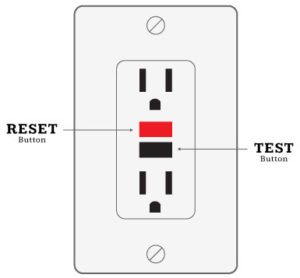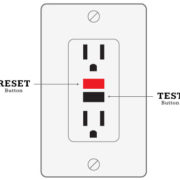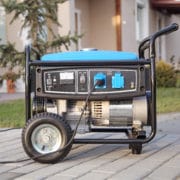What is a GFCI and Why Do I Care?
Depending on when your home was built, you will have ground fault circuit interrupters (GFCIs) installed in your bathroom, kitchen, garage, unfinished basement, and on the exterior of your home. These are important electrical safety devices that are nearly 100% effective: since the 1970s GFCIs have saved thousands of lives and have helped cut the number of home electrocutions in half*.

How do GFCIs save lives? The device constantly measures the flow of electricity through the two wires that form a closed circuit. The flow of electricity must be the same on both wires, within 4 – 6 milliamps (4 to 6 one thousands of an amp). When the current is not the same in both wires the GFCI device opens (or “trips”) in less than 1/10 of a second eliminating the danger of an electrical shock.
Typically, GFCIs are used to protect multiple outlets that are “downstream” (in other rooms or locations in the home) of the GFCI device. In this case, if the GFCI measures different flow of electricity on any of the wires to/from these multiple outlets, the GFCI trips and all connected outlets stop working.
What is the importance of knowing GFCIs can be protecting multiple outlets? Imagine you walk into one of your bathrooms and turn on your hairdryer. It doesn’t work. Everything looks normal, but the bathroom outlet has inexplicably stopped working. What you can’t see is this outlet is the 2nd or 3rd outlet downstream from the GFCI in another bathroom, or the garage, and that GFCI has tripped rendering all connected outlets inoperable. This can happen on any outlet that is connected, downstream, of a GFCI device.
I get several calls per month about non-working outlets. The first thing I find out is the location of that outlet and then, 9 times out of 10, all I need to do is talk the caller through resetting a GFCI device. If this resolves the problem, I’ve saved the homeowner a service call and fee.
Before calling an electrician when you discover an outlet isn’t working, first investigate if there is a tripped GFCI device in a bathroom, kitchen, or the garage. If so, simply follow these steps:
- Disengage anything that is plugged into the receptacle,
- Push the reset button back in (see picture below),
- Test if the GFCI has resumed current flow by plugging in your appliance and seeing if it works.
If it does work, you’ve just saved yourself the cost of a service call. If it does not work, or the device will not reset, it means the GFCI is faulty, the device is wet, or there is some other problem with the outlet. In any of these cases, you should contact your local electrician.
*Electrical Safety Foundation International





Leave a Reply
Want to join the discussion?Feel free to contribute!